Our iPad buying guide, updated for 2018, will get into all of these questions, but before we do, some quick links. If you"re just looking for where to buy a new iPad, you can go directly to the Apple Store:
When it comes to buying an iPad there are a few different questions, but they all come down to one main consideration: what do you need from an iPad? We"ll help you work out your requirements and which size of screen will satisfy them.
We"ll then talk about further options, such as storage capacity, cellular capabilities and colours. We"ll even talk about whether you should be getting an iPad at all (perhaps an Android or Windows tablet would offer better value for money) and second-hand/refurbished alternatives.
Finally, for each category of iPad we consider whether an updated version of that device is likely to be unveiled in the near future, and whether the threat of obsolescence should influence your buying decision. (From time to time Apple adds an iPad to its Vintage & Obsolete list, usually around five or six years after being launched, while slightly more recent devices may not receive iOS updates any more.)
When you"ve decided which iPad you want to buy, take a look at our best iPad deals for detailed advice on the best places to buy. And we"ve got a simpler comparison in What"s the best iPad for most people?
The current iPad line-up
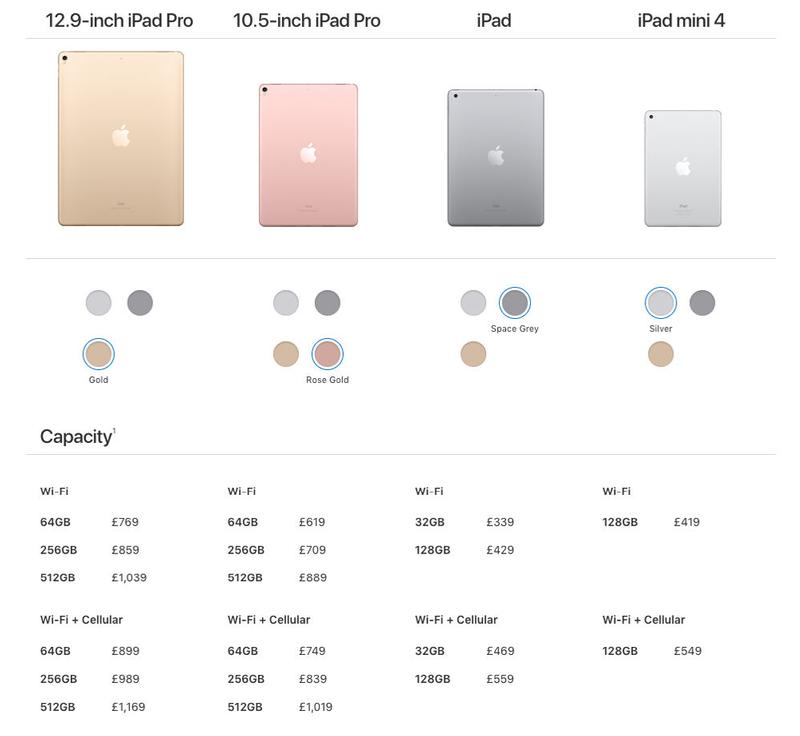
Apple currently sells four iPad models altogether, and each of those offers three or four colour options, one to three storage capacities, and the option to get Wi-Fi and cellular or just stick with Wi-Fi. That"s a lot of configurations: clearly we"ve got work to do.
iPad mini 4 prices
- iPad mini 4 (WiFi, 128GB): £419
- iPad mini 4 (cellular, 128GB): £549
9.7in iPad prices
- iPad (WiFi, 32GB): £339
- iPad (WiFi, 128GB): £429
- iPad (cellular, 328GB): £469
- iPad (cellular, 128GB): £559
10.5in iPad Pro prices
- iPad Pro 10.5 (WiFi, 64GB): £619
- iPad Pro 10.5 (WiFi, 256GB): £709
- iPad Pro 10.5 (WiFi, 512GB): £889
- iPad Pro 10.5 (cellular, 64GB): £749
- iPad Pro 10.5 (cellular, 256GB): £839
- iPad Pro 10.5 (cellular, 512GB): £1,019
12.9in iPad Pro prices
- iPad Pro 12.9 (WiFi, 64GB): £769
- iPad Pro 12.9 (WiFi, 256GB): £859
- iPad Pro 12.9 (WiFi, 512GB): £1,039
- iPad Pro 12.9 (cellular, 64GB): £899
- iPad Pro 12.9 (cellular, 256GB): £989
- iPad Pro 12.9 (cellular, 512GB): £1,169
Size
Apple sells iPads in four different screen sizes.
You"ve got one mini-size, 7.9-inch iPad, the iPad mini 4; two slightly different mid-size models, the 9.7-inch iPad and the 10.5-inch iPad Pro; and then there"s the super-sized 12.9-inch iPad Pro, which is the biggest and costliest option.
There"s something here for everyone.
Age
The mini 4 came out in September 2015. It"s the oldest iPad still on the market, but there"s plenty of life left in it yet. It should still run the latest apps and iOS updates without any noticeable trouble, although it won"t stay that way forever.
The 9.7in iPad is the rebranded version of what would have been the iPad Air 3, and replaces 2014"s iPad Air 2. The iPad was announced in March 2017 and was the newest iPad on the market until Apple launched the 10.5-inch iPad Pro, which came out in June 2017.
The (2017 model of the) 12.9in iPad Pro also came out in June 2017. The three iPads launched in 2017 are all powerful and advanced devices, and it will be a while before even the least well-specced of these starts to show its age.
Budget and requirements
Your choice of the individual models will depend on how much money you"re willing to spend, how portable and powerful you need your iPad to be, how long you need to be able to use your iPad (and for it to support the latest software), and in what areas (if any) you are willing to compromise.
Let"s get started. First of all we"ll decide if you should buy a standard-size, a mini or an extra-large iPad, and then we"ll narrow down your choice from there.
Which size should you get?
The first decision will cut our options drastically. Do you want a mini, 7.9-inch iPad (the mini 4), a mid-size, 9.7-inch iPad or 10.5-inch iPad Pro, or a big-screen, 12.9-inch iPad Pro?
Screen size
The most obvious aspect of this decision comes down to screen size. The iPad mini 4 comes with a 7.9-inch screen (measured diagonally); the mid-size iPad and 9.7-inch iPad Pro both have - fairly obviously in the latter"s case - 9.7-inch screens; and the 12.9-inch iPad Pro is also pretty self-explanatory, packing a stunning and spacious 12.9-inch screen.
But how big a screen do you really need?
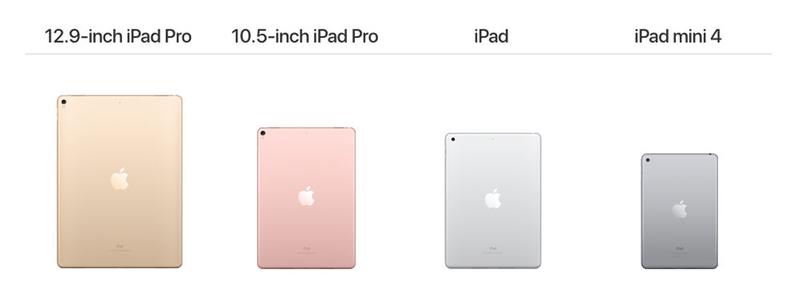
You can get an idea of the comparative sizes in the picture above. But you can also think of the tablets in terms of print publications: the mini models are roughly the size of a paperback; the mid-size iPads are closer (in length and width, even though they are very much thinner) to a hardback or Private Eye-style mini-magazine; and the 12.9-inch iPad Pro is more like a standard magazine.
The larger screen is obviously better for immersive entertainment. Whether watching films or playing games, it"s a more enjoyable, richer experience. The iPad mini has only about two-thirds of the screen area of the 9.7-inch iPad; the 12.9-inch Pro has in turn about 78 percent more screen space.
If you"re worried that an iPad mini will feel cramped, we"d point out that the mini screen feels much closer to the mid-size iPads than you might think. And we"re getting increasingly used to watching films and TV shows on phone screens. Don"t discount the mini as an entertainment device - it"ll do you proud.
This is simply a question of priorities. Are you more set on getting maximum screen space, or are you willing to compromise on that front in order to get a lower price tag and improved portability?
Your choice of iPad depends to a huge extent on personal feeling, and it"s worth trying to get your hands on the various models, whether in an Apple Store or at a friend"s house, to get an idea of what you"re looking for.
If it"s impossible to do this, try the trick we"ve used occasionally in videos when trying to give viewers an idea of the dimensions of an unreleased product: check the height, width and so on (they"re listed below) and use them to knock up a cardboard cutout to play around with.
Portability
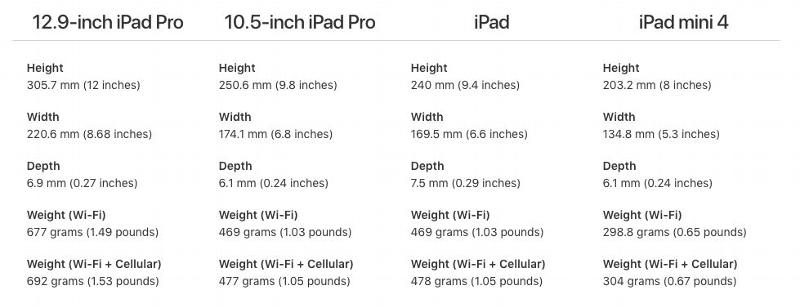
One of the payoffs for settling for a smaller screen comes in the form of portability. For one thing, the iPad mini 4 is a lot lighter - there"s a big weight gap between it and even the mid-size iPads: 299g to 469g, looking at Wi-Fi-only models. (Note that the iPad and 10.5in iPad Pro weigh the same, even though the latter is longer and wider. It makes up for this by being significantly thinner.)
All variations of cellular capable iPads weigh a tiny bit more than their Wi-Fi-only counterparts thanks to extra components, but it is a barely noticeable difference of between 5g and 15g.
The mini 4 is more portable, then, as you"d expect. As well as its markedly lower weight it also has a smaller body, which slips easily into a rucksack or jacket pocket (or even a trouser pocket, although it does stretch the material rather ridiculously). If you plan to mainly use your iPad out and about, on holiday or commuting, the iPad mini is your best bet.
The iPad and 10.5-inch Pro are pleasingly portable, but they still can"t match the mini for portability. The iPad has a slightly lower length and width; the Pro is slimmer.
The 12.9-inch Pro, as you"d expect, is considerably less portable than its smaller cousins, but we think Apple has done well to keep it down to 677g (that compares to the first-gen 12.9in Pro, which was 713g). It"s actually 0.6mm thinner than the 9.7in iPad. It certainly won"t go in a pocket (unless you"re a clown), but the 12.9-inch Pro remains a slender, relatively lightweight and portable alternative to a laptop.
Speed
The newer the iPad you"re looking at, the faster it"s likely to be in terms of both general processing and graphics. But you"ll also find that the larger iPads tend to be faster than their smaller equivalents. You can get an idea of relative speed by looking at a few relevant specs:
- iPad mini 4: A8 processor chip
- 9.7in iPad: A9 (Apple claims this is 1.6x faster than the A8 at general processing, and 1.8x faster at graphics)
- 10.5in iPad Pro: A10X Fusion (Apple claims this is 2.5x faster than the A8 at general processing, and 4.3x faster at graphics)
- 12.9in iPad Pro (2017 model): A10X Fusion
Another possible factor to consider is RAM. the iPad mini and 9.7in iPad both have 2GB of RAM; Apple hasn"t announced the RAM allocation in the new iPad Pros, but there"s a good chance it will be more - since the 12.9in iPad Pro (2015 model) had 4GB.
We put three of the current iPads, as well as some recent models, through a range of speed tests to give an idea of their relative capabilities. The iPad Pro 12.9in (2017) would be close to the 10.5in model because it has the same processor.
Geekbench 4 CPU test
We started with the general processing test in the Geekbench 4 app. The 2017 iPad Pro models are streets ahead in this department:
JetStream
Next we tested the iPads" ability to deal with Javascript web applications using the JetStream 1.1 browser test. Again the newest iPad Pro models were a long way ahead.
GFXBench Metal
What about graphics? We tested this using GFXBench Metal.
If you want to use highly demanding apps such as video and image editors, or if you"re into graphically advanced games, you should be edging towards the iPad Pros.
If you"re going to be using your iPad for the odd bit of email and web surfing, you should be leaning towards the mini 4, because the power of the 12.9-inch Pro, for example, will be wasted on such gentle workloads. Mind you, this may be offset if you need a big screen.
Battery life
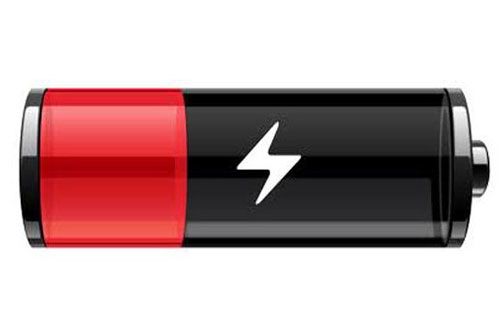
While we"re talking benchmarks, let"s reiterate the probably well-known fact that bigger iPads have bigger batteries, and last longer away from a power supply.
For all four currently available iPads, however, Apple makes precisely the same claim concerning battery life: that they will last "up to 10 hours of surfing the web on Wi-Fi, watching video or listening to music" or "up to 9 hours of surfing the web using a mobile data network".
Despite the fact that Apple doesn"t release this information officially, we know that the iPads have different battery capacities:
- iPad mini 4: 5,124 mAh
- 9.7in iPad (2017): 8,827 mAh
- 10.5in iPad Pro (2017): 8,134mAh
- 12.9in iPad Pro (2017): 10,875mAh
Different models have different generations of battery technology, and different demands are placed on their power consumption, resulting in drastically different battery life performance in our experience. Here"s how some recent iPads have performed in the battery test segment of the Geekbench 3 app.
Price
Traditionally, the biggest mark in favour of buying from the iPad mini range was the low price. However, since the new iPad was announced that is no longer the case. The only model of iPad mini available is the iPad mini 4, and it"s only sold by Apple in 128GB versions. The Wi-Fi only model costs £419, while the cellular version will set you back £549 - the same price as the cheapest 9.7-inch iPad Pro.
The new iPad starts from £339, £80 cheaper than the Wi-Fi-only mini 4.
The 12.9-inch iPad Pro starts at at a punishing £769, but note that Apple has doubled the storage allocation for the iPad Pro models - so that money gets you a very decent 64GB. The top-end models come with 512GB, and for the 12.9-inch model that"ll set you back a dizzying £1,039 and £1,169 for the Wi-Fi and cellular versions. We"re getting into MacBook price territory (for comparison, the 13-inch MacBook Air starts at £949) and these models are clearly not for casual or budget-conscious buyers.
As we mentioned in the portability section, the larger iPad Pro is more something to consider as an alternative to a laptop. For these reasons it calls for more pre-purchase research, trying a sample out in an Apple Store and so on.
Hopefully by now it"s become clear whether a mini, mid-size or large iPad is right for you, which means you can proceed to...
What next? iPad mini buying guide | Mid-size iPad buying guide | 12.9-inch iPad Pro buying guide | Return to top of article
Which iPad mini should you buy?
Okay, so you"ve settled on either an iPad mini, a mid-sized iPad or Pro, or the big-screen 12.9-inch iPad Pro. We"ll look at the iPad mini first to narrow things down further. (If you"d prefer one of the larger models instead, skip ahead to the mid-size iPad section or the big iPad Pro section.)
If you"ve settled on an iPad mini, then Apple has made things easy for you: there"s only the iPad mini 4, and it"s only available in two different models, and three colours: silver, grey, and gold.
Either way, you"ll get an A8 processor chip with an M8 motion co-processor, 2GB of RAM, 128GB of storage, a Retina screen, and an 8MP rear camera.
Beyond colour, the only thing to decide is whether you want to grab the Wi-Fi only model (£419) or the 3G version (£549). The £130 price difference might seem steep, but if you expect to travel with your mini 4 (surely one of the main benefits of the smaller model) then 3G support might be worth the extra cost.
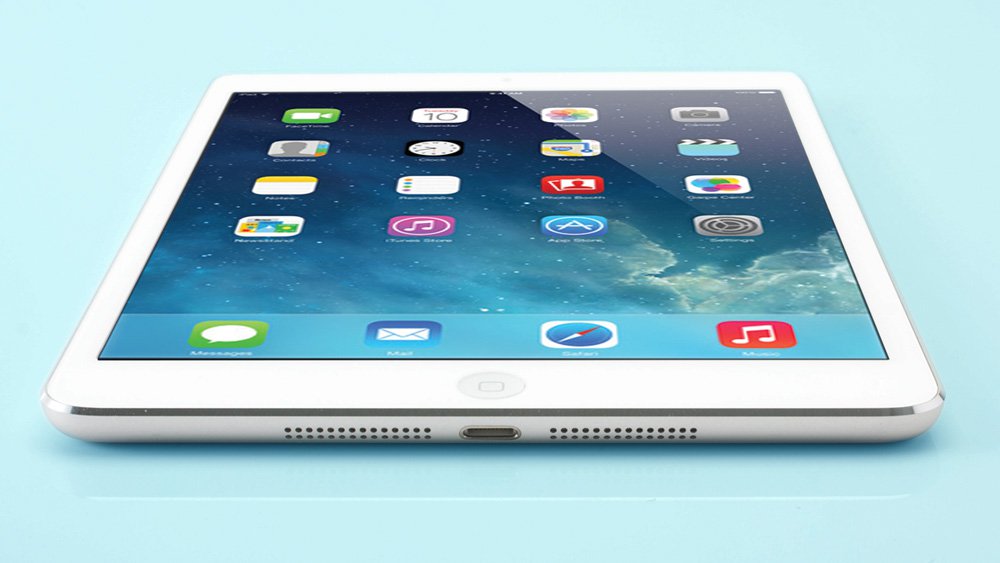
Future releases
It"s always annoying to buy a product only for the manufacturer to announce its successor a few weeks later. Which makes the release date of the iPad mini 5 an object of some interest to prospective iPad mini buyers. Sadly, only Tim Cook and a few of his closest advisors know for sure when the iPad mini 5 (or iPad Pro 7.9-inch, perhaps) will be announced, although we can make some informed predictions.
The iPad mini 4 came out in September 2015, and Apple has tended to update that line on a yearly basis; but Apple"s September and October 2016 press events came and went with no word about the next iPad mini. Then again, if the 18-month gap between the launches of the iPad Air 2 and 9.7-inch iPad Pro has anything to teach us, it"s possible that Apple will update its tablets less frequently from now on.
With no iPad mini announced in March 2017 alongside the 9.7-inch iPad and still no word at the iPad Pro update in June 2017, there will be a longer wait to see if the line is updated.
For the time being, then, don"t worry about the iPad mini 5 coming out and making your brand-new device obsolete. If you need an iPad mini now, go for it.
Take a look at our round-up of the iPad mini 5 release date rumours to find out more.
What next? Pros and cons of each iPad model | Conclusion: which iPad is right for you? | Storage capacity options | Colour options | 3G/cellular | Return to top of article
Which mid-size iPad should you buy?
Okay, you"ve settled on one of the mid-size iPads: either the 9.7-inch iPad or the 10.5-inch iPad Pro. Which is the better choice for you?
If you"ve got lost and would prefer a smaller or larger tablet, jump back to the iPad mini section or ahead to the 12.9-inch iPad Pro section. Alternatively, jump to the top of the page.
What are the differences between the 9.7-inch iPad and the 10.5-inch iPad Pro?
First, let"s sum up the main differences between the 9.7-inch iPad and 10.5-inch iPad Pro. Take a deep breath, because there are lots.
First, the physical differences. The 10.5-inch iPad Pro has a bigger screen, and to fit this in it has reduced the size of the bezels around the edge of the screen - but it"s also had to make the iPad itself a little longer (by about 10mm) and wider (by about 5mm). On the other hand, the Pro is significantly slimmer (6.1mm, to the iPad"s 7.5mm). The two factors pretty much cancel each other out: they both weigh the same, almost to the gram (they"re both 469g with Wi-Fi only; the 9.7-inch iPad is one gram heavier, 478g to 477g, in the cellular model).
To return to the screens, both models come with Retina displays (to understand what that means, see our guide to Retina displays) and both have a pixel density of 264ppi. In sharpness they should be identical.
But the Pro"s screen has a resolution of 2224 x 1668, compared to the 9.7-inch model"s 2048 x 1536. And it feels better too - it"s a fully laminated screen so there isn"t the slight "give" that you get when pressing down on the 9.7-inch iPad"s display.
And the Pro gets a True Tone display which adjusts contrast and brightness in varying light conditions. This is subtle in effect, but sitting at a desk under electric light in late afternoon with the iPad Pro and the iPad side by side, it is fairly clear that True Tone is gently warming things up - a kind of watered-down version of Night Shift. The nice thing is that you don"t need to worry about this feature, you just get slightly better and more context-appropriate screen performance.
The iPad Pro has considerably better cameras. Its rear-facing camera is rated at 12Mp, to the iPad"s 8Mp, and gets a flash and optical image stabilisation, which the iPad doesn"t; it"s capable of recording 4K video, whereas the iPad is limited to 1080p. The Pro"s front-facing camera is 7Mp to the iPad"s 1.2Mp, and 1080p to the iPad"s 720p.
Both devices get the Live Photos feature, where short snatches of video are captured before and after still photos so they can be animated.
The Pro 10.5 has a processor that"s approximately one and a half generations more advanced than the iPad: the A10X Fusion to its A9. We haven"t tested the former in our lab just yet, but it"s a good deal faster on paper - mind you, you won"t see much real real-world difference until app developers release software that"s designed to harness the latest Apple hardware.
The Pro 9.7, like the larger Pro model, is compatible with the Apple Pencil, and it has a discreet connector on its lefthand edge that allows you to attach and power the Smart Keyboard or a third-party equivalent. These two options, while they can be expensive (the Apple Pencil and 9.7-inch Smart Keyboard cost an extra £99 and £159 respectively) make the Pro a far more appealing option for business and creative users.
And, while for many buyers this won"t be a huge priority, audio is a huge difference. The Pro has four speakers, compared to the iPad"s two, and can fill a small room with warm, immersive sound that makes watching films or listening to music a pleasure.
The iPad"s audio output is thin in comparison - we would always previously have recommended buying separate wireless speakers if you want to use your iPad as a sound-based device, but the Pro"s enhancements make this largely unnecessary.
And the iPad Pro is available in pink, as well as the three colours (silver, gold, Space Grey) that the iPad comes in.
But what do these differences mean in terms of your day-to-day experience?
Price
The iPad Pro 10.5 is a lot more expensive than its older sibling, although its higher range of storage allocation options exaggerates this difference somewhat. It costs:
Wi-Fi: £619 (64GB), £709 (256GB) and £889 (512GB). Cellular/3G: £749 (64GB), £839 (256GB) and £1,019 (512GB).
The iPad costs:
Wi-Fi: £339 (32GB), £429 (128GB). Cellular/3G: £469 (32GB), £559 (128GB).
Conclusion
The iPad Pro 10.5 is a lot more expensive than the iPad, yet there are so many significant improvements that we reckon it"s worth it. As usual, however, this depends on personal needs.
If you"re into iPad photography, the greatly superior camera specs and range of photographic features makes the Pro 10.5 a better choice. Detail is better in overcast conditions, and the rear-facing flash lets you shoot in low light; there"s 4K video; selfies are far sharper.
If you"re a designer or other creative type, having access to the excellent (if costly) Apple Pencil stylus will be a major plus, and the 10.5-inch Smart Keyboard is a nice option for business users.
The Pro"s screen is bigger, and feels better; and including this bigger screen hasn"t resulted in a bulkier device. Indeed, it"s slimmer than the iPad 9.7in and the same weight, albeit a shade longer and wider.
And the processor is quicker, which doesn"t mean much right now but will allow you to run processor-intensive apps and graphically demanding games for years to come.
Those who have light use in mind (email, browsing the web, simple games etc) should be absolutely fine with an iPad, and would do well to save the extra cash. The A9 processor is no slouch, either.
We"ll run through the pros and cons of each model, and discuss final decisions (such as storage allocation, 3G and colour choice) in the section called Decision Time. Here are some other sections you might want to read next:
What next? Pros and cons of each iPad model | Conclusion: which iPad is right for you? | Storage capacity options | Colour options | 3G/cellular | Return to top of article
Which 12.9-inch iPad Pro should you buy?
This one won"t take long, because only the second-generation models of the 12.9-inch iPad Pro are currently available - we don"t have to worry about choosing between new and old models. (There are significant differences between the 2015 and 2017 models, all of them positive - the main improvements are a quicker processor, better cameras and a camera flash, the True Tone display, and increased storage options. The entry point has gone up by £40, however.)
The iPad Pro 12.9in (2017) is available in six versions:
- 12.9-inch iPad Pro (Wi-Fi-only, 64GB): £769
- 12.9-inch iPad Pro (Wi-Fi-only, 256GB): £859
- 12.9-inch iPad Pro (Wi-Fi, 512GB): £1,039
- 12.9-inch iPad Pro (cellular, 64GB): £899
- 12.9-inch iPad Pro (cellular, 256GB): £989
- 12.9-inch iPad Pro (cellular, 512GB): £1,169
You can buy the iPad Pro 12.9 (2017) here.
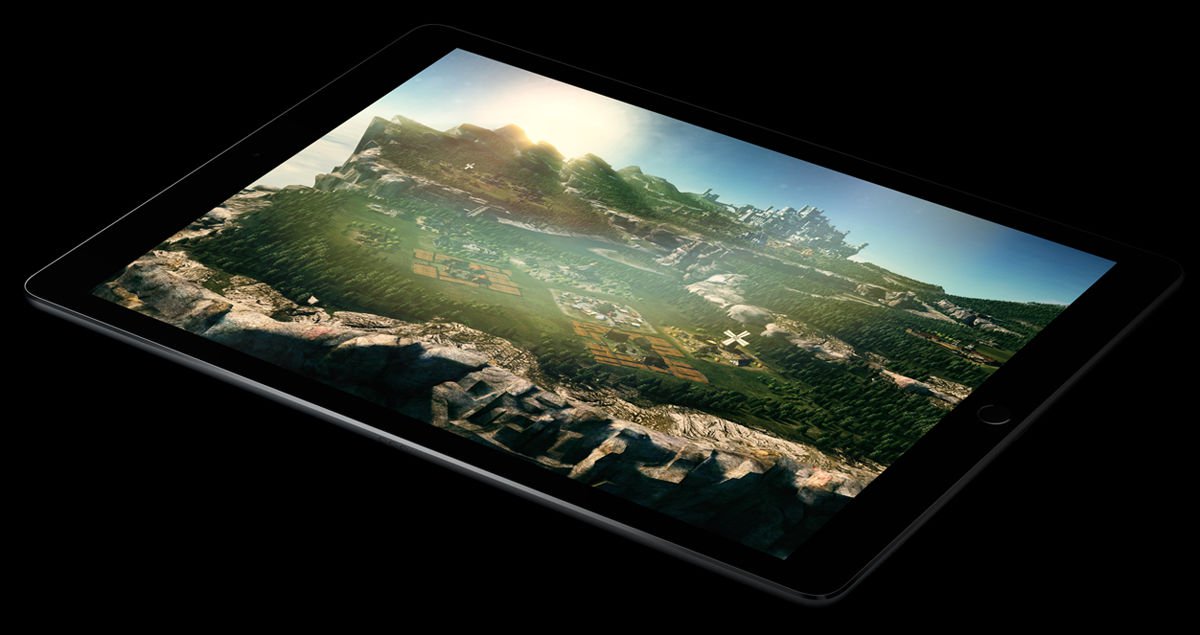
The iPad Pro offers the biggest screen ever on an Apple tablet (12.9 inches), a super-fast processor (the A10X Fusion - although this is also available on the Pro 10.5in), an excellent 12Mp rear-facing camera with flash (if you can imagine using a device as big as that for photography), and a user experience that looks more than capable of replacing a laptop.
But on the down side, it"s far less portable than even the mid-size iPads (even though it remains admirably slim, the sheer screen area makes it a handful) and ruinously expensive.
As has become an annoying tradition with iOS devices lately, the storage options for the iPad Pro have a big hole in the middle. There"s no 128GB option: it"s either go budget (if you can call £769 "budget"), with 64GB (which ought to be comfortably enough for most users, although it may be a little on the low side for a work, creative, or gaming device); or go big with either 256GB or the new and frankly alarming 512GB, either of which are for serious film editors and creative design users, or people with enormous libraries of apps, games, videos and songs.
This is a personal decision, of course, but we can offer a little guidance. The things that tend to take up all the space are (in order of size, starting with the biggest): movies; TV shows; games; music; photos and other images; documents.
If you plan to use your tablet for lots of things near the start of that list, 64GB may not be enough. Keen gamers, those who like to watch films on the go or keep large music libraries, will find themselves juggling space. Mobile workers may be fine, especially if they store documents in the cloud. (Other cloud-based strategies, such as iTunes Match, can help you cope with a smaller storage allocation.)
But bear in mind that plenty of people coped with just 16GB on their entry-level iPhones, iPad minis, and iPad Airs before Apple cut the 16GB option, and it can be done. We view 64GB as a mid-level storage option, not at all a bargain-basement bare minimum.
We look at the question of storage in slightly more detail in a later section of this article: How much storage does my iPad need?
What next? Pros and cons of each iPad model | Conclusion: which iPad is right for you? | Storage capacity options | Colour options | 3G/cellular | Return to top of article
Decision time!
Phew! Are we close to a decision? Here are the pros and cons of each iPad model, and the people for whom it would be the ideal choice:
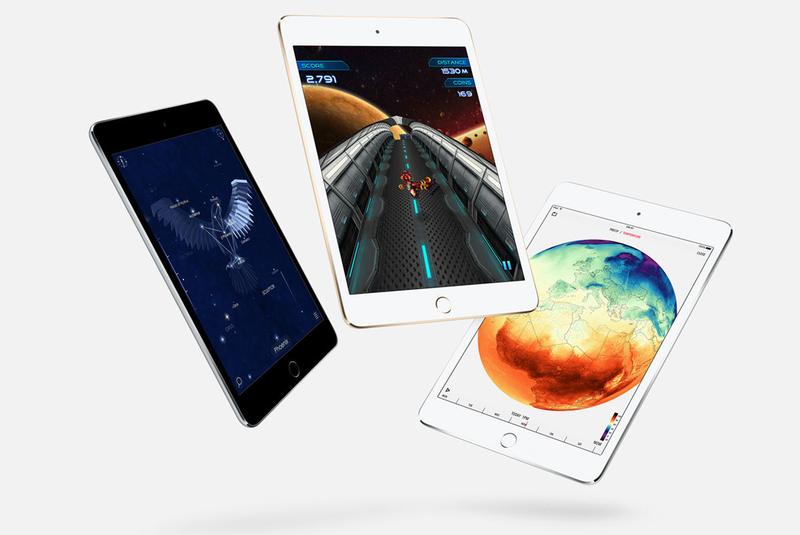
iPad mini 4: Pros, cons, and who is it for?
Pros: Very portable. Decently powerful. 8Mp rear-facing camera, and some new camera/video modes. Touch ID fingerprint scanner. Barometer. Anti-reflective screen finish. Gold colour option.
Cons: Small-screen reservations. Extra £80 on top of the new iPad (but still a good deal).
Ideal for: The portability-conscious with a higher budget. Gamers on the go. Tablet photographers. Ebook enthusiasts.
Read more: iPad mini 4 review
View iPad mini 4 on Apple Store
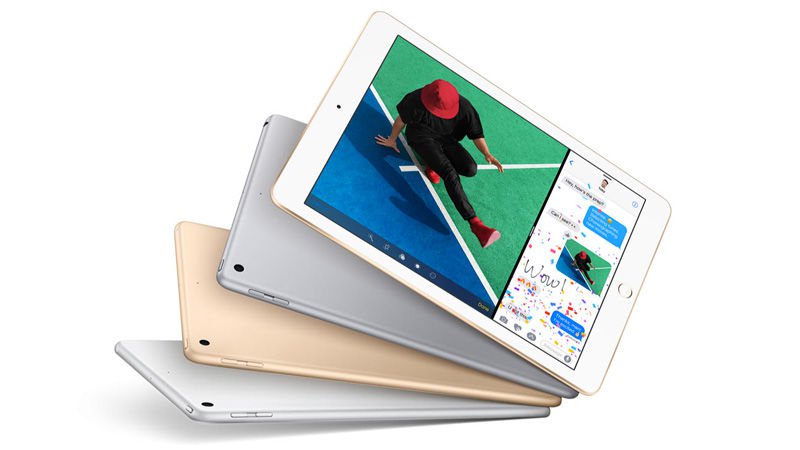
iPad 9.7in (2017): Pros, cons, and who is it for?
Pros: Beautifully thin and light. Strong camera makes it a legitimate photographic option (although it is surpassed by the camera on the Pro models). Natty gold colour option. Powerful enough to handle pretty much anything on the App Store.
Cons: Powerful enough to handle pretty much anything on the App Store right now. The more time developers spend working with the A10X Fusion, the more apps and games you"ll see that are pitched at a higher level than the iPad"s A9 - but this is really nitpicking. Can"t use Apple Pencil or Smart Keyboard. No natty pink colour option.
Ideal for: Anyone who needs a big screen (not a huge screen - they"ll want the 12.9-inch iPad Pro) but is on a budget, and can cope without the very latest in processing muscle and camera megapixellage. Still a great all-rounder, but less future-proofed than the Pro models.
Read more: iPad 9.7in (2017) review and Inside the new iPad 2017 - component teardown
View iPad 9.7in on the Apple Store
iPad Pro 10.5in (2017): Pros, cons, and who is it for?
Pros: More powerful than the iPad. This and the larger Pro offer the best camera setups, including rear flash, Retina flash feature for the front camera, numerous other photographic features and the best megapixel ratings. Is the only iPad to gets the pink colour option (which we actually like!). Can use Apple Pencil and Smart Keyboard.
Cons: Expensive. Overkill for many situations - current apps will run happily on the older iPad 9.7in"s A9 processor. Smart Keyboard is hard to type on quickly and accurately at this size.
Ideal for: Gamers and iPad photographers, and anyone who wants to be able to run the most demanding apps now and in the future. Power users. Those who are boastful and/or rich - if they"re not distracted by the 12.9-inch iPad Pro. Business users (if the range of apps meets their approval). Creative design types.
Read more: iPad Pro 10.5in (2017) review
View 10.5-inch iPad Pro on the Apple Store
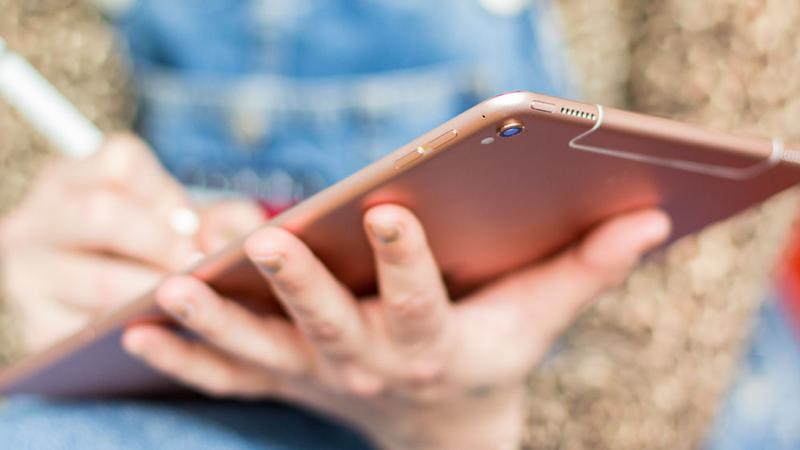
iPad Pro 12.9in (2017): Pros, cons and who is it for?
Pros: Huge screen (12.9 inches). Extremely fast processor. Four speakers. Can use Apple Pencil and Smart Keyboard.
Cons: Least portable iPad yet (although it is admirably slim). Punishingly expensive. Processor speed could be overkill for many prospective buyers.
Ideal for: Creative types, most of all, but anyone who needs a big screen will be interested. Gamers will be intrigued by that insanely fast chip. Those who enjoy consuming media on the go will like the combination of a sumptuous screen and a quad-speaker audio system.
Read more: iPad Pro 12.9in (2017) review
View 12.9-inch iPad Pro on Apple Store
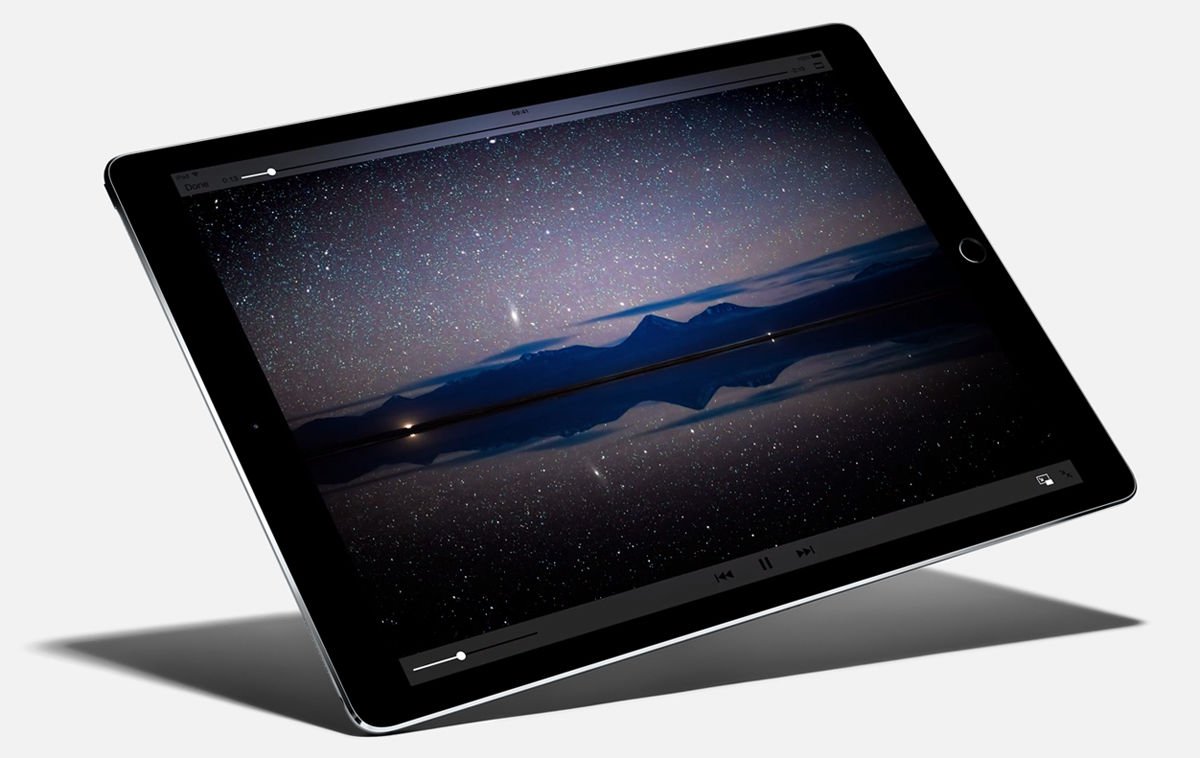
Final conclusion
The iPad mini 4 is the tablet to go for if you"re looking for a super-portable tablet and are willing to compromise on screen size and processing power - but it now costs £80 more than the iPad.
If you need a larger screen then your next thought will probably be the iPad 9.7in (2017), which is also the cheapest option - starting at £339. The iPad Pro 10.5in starts at £619, an extra £180 (albeit with twice the storage), so you really need to weigh up if you need the better spec list: it has a slightly bigger screen, faster processor, better camera with flash, Apple Pencil support, True Tone display and quad speakers.
The extra money is overall just about worth it in our opinion. But you"d be fine with the iPad if you"re willing to make some sacrifices. And the Pro 10.5 is an expensive choice.
And what of the 12.9-inch iPad Pro? This behemoth will serve you well as a laptop replacement, and seems targeted at three distinct groups: business users, gamers and (most of all) creatives. It"s going to cost you, but if you want that big, big screen, that super-fast processor, and those tasty new accessories, it should be worth it.
View iPad mini 4 here, iPad here and iPad Pro here.
Should you buy your iPad on contract?
We"d generally say not - it"ll be cheaper up front but you"ll end up paying more in the long run. But it all depends on your budget and the most convenient way to pay for your device. (Businesses often prefer to pay for employees" tablets on contract.) And if you find a good deal, that may be enough to swing the decision.
Remember that you won"t be able to switch to a different data provider until you"ve finished paying off the contract, as the iPad is likely to be locked to the original contract provider. Here"s how to unlock an iPad from its network, once you"ve fulfilled your contractual obligations.
We discuss the best iPad contract deals in a separate article: Best iPad deals.
What storage capacity should my iPad have?
The four iPads offer anywhere from 32GB to 512GB. How much storage capacity will you need?
Well, first of all remember that you can"t upgrade the storage capacity of an iPad at a later date: this is your storage limit from now until you buy another iPad, so aim high and buy as much storage as you can afford.
Apple is probably a little cheeky in how much more it charges at each storage point (this stuff is relatively cheap for a manufacturer to upgrade), but it"s better to spend an extra few pounds now than to buy an entire new iPad in six months" time. Also bear in mind that the true storage capacity of an iOS device is less than the advertised capacity, partly because of the space taken up by pre-installed software.
Storage capacity is in our experience mainly used up by three things: music, photos, and videos, in increasing order of storage drain. If you want to keep lots of films - or even a few, to be honest - then you need high storage: probably 64GB or higher for video fans.
Same applies to large photo or music libraries, to a lesser extent, although Photo Streams and iTunes Match respectively make it practical (if perhaps not preferable) to keep your stuff in the cloud and access it remotely.
The other thing that will fill up your storage is apps, but the amount of space they take up varies enormously. Those heavy-duty games we talked about earlier will use up a lot of space, and gamers should aim high on storage - 128GB is a good bar to aim at, although you"d probably be fine with 64GB.
Colour options
We"re not sure we can help too much on this one. But the basic gist is this: if you"re getting the iPad mini 4, iPad 9.7in or iPad Pro 12.9in, you can buy it in grey, silver, or gold. And if you"re getting the iPad Pro 10.5in, you get all three of those options and pink (or rather Rose Gold) too.
We really like the iPad in gold, as we mentioned earlier - it"s quite bronze-like in its warmth - and the pink, while a bit of an opinion divider, is nowhere near as bold as that sounds. But grey or silver are the more conservative options.
Here"s what they look like:
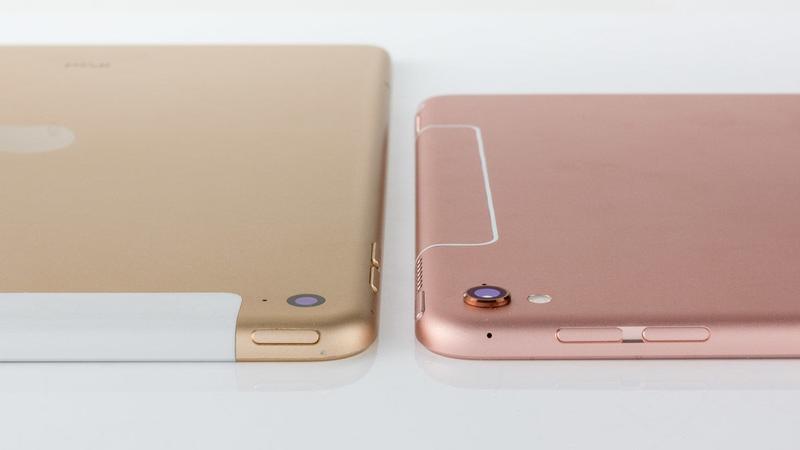
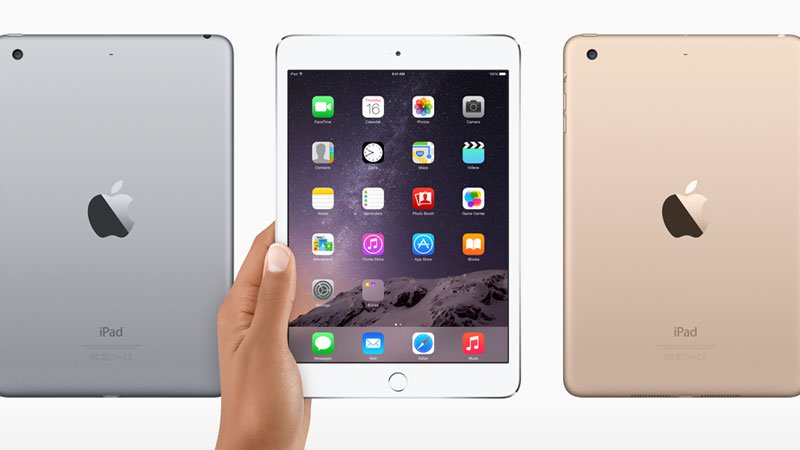
The 3G/4G/Cellular option
Finally, do you need 3G/4G/cellular connectivity?
It"s a luxury, even if it"s a nice one to have. For an extra £100 or so, you"ll be able to access the web and email, and use connected apps, away from a Wi-Fi network. (You also need to factor in the cost of a data plan.)
Consider carefully how often you"re going to do that - with an iPad mini there"s likely to be more on-the-go use than with a full-size iPad, but it"s still a lot to pay for something you may only use from time to time. Have you got a regular (overground) commute where you"d enjoy catching up on news headlines or email? Then it could be worth the extra.
Just bear in mind, as a commenter called Chromejob points out below, that the cellular option also brings with it a GPS radio - meaning that you"ll be able to pull in accurate location data when using your device on the go.
So that"s it - hopefully we"ve walked you through the iPad buying decision without too many tears. We wish you many happy hours of iPad use.
Bonus 1: The refurbished option
We"ll mention this only briefly because it"s covered elsewhere, but one option you should absolutely consider is Apple"s Refurbished store. It"s a sort of halfway house between new and second-hand: the devices are pre-owned, but Apple has checked them thoroughly, replaced any worn-out components, and rated them as good as new (and you get a warranty to prove it).
If this sounds appealing, have a look at our in-depth article: Should you buy a refurbished iPad: The differences, pros and cons of refurbished and brand-new iPads
Bonus 2: The laptop option
The launch of the ultra-slim 12-inch MacBook has presented Apple customers with a new dilemma: for certain types of buyer, and certain uses, this thin-and-light laptop is a legitimate alternative to a tablet.
If you"re going to pick a laptop instead of a tablet, the 12-inch MacBook is one of the better options out there. On the plus side, you gain an integrated hardware keyboard (very handy if you"re likely to use your device for long-form typing) and the ability to run full desktop software thanks to the MacBook"s use of macOS. On the down side, the cheapest 12in MacBook costs £1,249, £80 more than the most expensive iPad Pro 12.9in (2017).
For a direct comparison look at our iPad Pro vs MacBook Air comparison review. For more general discussion of the Mac range, including Apple"s various laptops, take a look at our Mac buyers" guide.
Bonus 3: The Android option
We"re calling this section the Android option, but there are also Windows tablets to consider. In short, should you be looking at non-Apple tablets as well as iPads?
Yes, you should. On balance we prefer iPads to pretty much any company"s rival tablets, but Android tablets (and even Windows tablets) have plenty to offer and are a better options for some buyers.
Android tablets are designed and manufactured by a variety of companies, but they are united by the fact that they all run a version of Google"s Android operating system. There is therefore a lot of variety between these tablets, in terms of their design, features and price tags.
Android tablets tend to be (but are not always) cheaper than iPads of comparable power, so you could view them as better value for money - although they also tend to be less attractively designed, and your software options are less appealing.
There"s plenty of debate over the relative merits of Android itself and the iPad"s iOS operating system - we think iOS is easier to use - but it"s hard to argue with the statement that the apps available for iOS are on average better than those for Android.
Apple curates its App Store more strictly than Google polices the Google Play store, so there"s more junk on Google"s platform. And because iOS users have proved more inclined to spend money on apps than their Android counterparts, app developers frequently release their wares on iOS first.
iOS is also more secure, but not by a huge margin any more - see iOS vs. Android: Which is more secure?
For those who are comfortable with Android"s (arguably!) more difficult and rough-edged operation - and we"re not talking rocket science, just a bit more potential for customisation and slightly greater scope for installing something dodgy if you"re not paying attention - then an Android tablet could well be a better budget option.
For one thing, if you want something basic for extremely light use, going outside of Apple"s product line-up brings in some super-budget options (such as Amazon"s Fire tablet) that may fit what you"re looking for.
We discuss some of these options (including our opinion on the debate, but looking at both sides) in a separate article: Why iOS beats Google Android.
If you do decide to plunge into the Android ecosystem, our colleagues at Tech Advisor are well equipped to walk you through the buying process. Take a look at their list of the best Android tablets.
No comments:
Post a Comment